“How is it that each of us hears them in our native language? Parthians, Medes and Elamites; residents of Mesopotamia, Judea and Cappadocia, Pontus and Asia, Phrygia and Pamphylia, Egypt and the parts of Libya near Cyrene…” (Acts 2:8-10)
The Day of Pentecost was a watershed for the Church in a literal sense. Celebrated from ancient time by the Chosen People as a spring harvest festival, it became the literal birthday of the Church.
On that day, the Holy Spirit poured Himself out like so many rivers of flowing water on those gathered in Jerusalem for the feast, and from this divine event the Church began its evangelization of the world. Many of the Jews in attendance that day spread the Gospel of Jesus Christ throughout the ancient world in the Church’s earliest missionary efforts.
An Infant Church
Bithynia-Pontus was a Roman province in the northern part of Turkey on the shores of the Black Sea. The above passage from Acts of the Apostles names Jews from Pontus in the list of those who were present on the day the Holy Spirit came. So it is not surprising that Pontus became one of the cradles of the infant Church.
Evidence of that is also given in the First Letter of St. Peter, which is addressed to “the chosen sojourners of the dispersion in Pontus, Galatia, Cappadocia, Asia, and Bithynia” (1 Peter 1:1), so it seems that Christianity spread to this region even during the time of the Apostles—amazing!
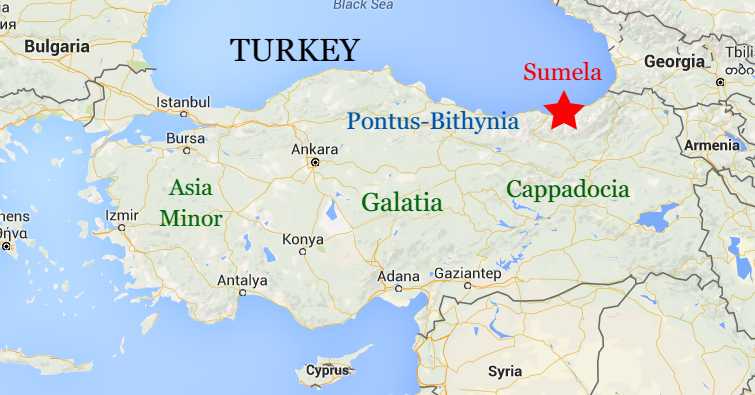
St. Peter was writing to the Christians there to encourage them during an outbreak of persecution by the Roman Empire that lasted on and off for three hundred years. It was likely this region where the grandparents of St. Basil the Great hid themselves for six or seven years during the persecution of the Emperor Diocletian (303-313 AD).
However, one of the clearest indications that Christianity was alive and well in Pontus is the ancient Greek monastery that hangs off the side of the mountain there. The incredible monastery is called Sumela (“Sou mela” in Greek means “of the black”), so this was known essentially as the Monastery “of the Black Mountain”. Here is the front view:
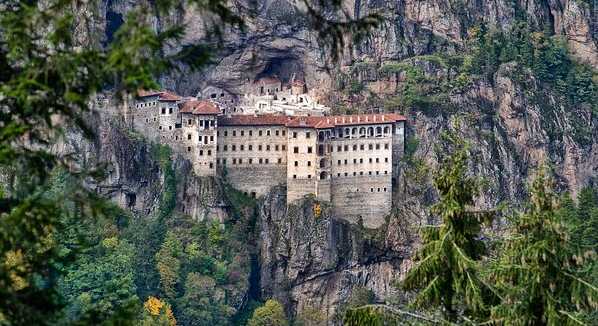
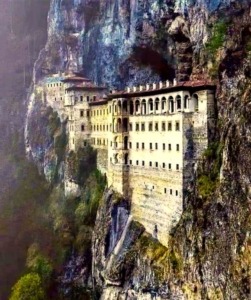 Then there’s this even more incredible side view!
Then there’s this even more incredible side view!
One almost gets queasy looking at this amazing structure. It seems as if it could topple face-down off the mountainside at any moment!
However, some human structures have been clinging to that mountainside since before 400 AD, so it is unlikely that the monastery will be going anywhere any time soon.
If you look closely, you can see a large cave-like hollow in the mountain wall above the monastery, which is probably why they chose that spot for a community of monks. (You’ll be able to appreciate how huge that hole is in the pictures below.)
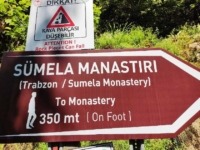 A very strong Greek monastic tradition holds that spiritual seekers were to escape from society—to deserts, mountains, and caves, etc. Most unusual of all, St. Simeon Stylites the Elder spent 37 years living on top of a pole! (If he had perched on two poles, modern psychology would surely label him bi-polar…but I digress.)
A very strong Greek monastic tradition holds that spiritual seekers were to escape from society—to deserts, mountains, and caves, etc. Most unusual of all, St. Simeon Stylites the Elder spent 37 years living on top of a pole! (If he had perched on two poles, modern psychology would surely label him bi-polar…but I digress.)
Sumela monastery, sequestered in a hollow of an almost unreachable mountainside, certainly fit that ancient tradition.
As if to confirm this fact, Sumela sits at 3,900 feet above sea level! Even today you can only get there by foot. (I love the rockslide warning above the monastery sign!)
An Ancient Holy Site
It’s not known exactly when the monastery was founded, but legend has it that two monks from Athens named Barnabas and Sophronios established it during the reign of the Emperor Theodosius (375-395 AD), who made Christianity the official religion of the Roman Empire.
![]() It is believed that the two monks brought a holy icon of the Blessed Virgin Mary to the place, which is said to have been painted by St. Luke himself—quite the credentials! The icon quickly became famous for miracles, attracting many pilgrims and aspiring monks to the mountainside.
It is believed that the two monks brought a holy icon of the Blessed Virgin Mary to the place, which is said to have been painted by St. Luke himself—quite the credentials! The icon quickly became famous for miracles, attracting many pilgrims and aspiring monks to the mountainside.
Sumela was likely known to St. Basil the Great (330-397) who carried out his ministry in the adjoining province of Cappadocia. Within several decades of the monastery’s founding, one of the Church’s great ecumenical councils was held at the city of Chalcedon (in 451) in that very province, and undoubtedly the monks of Sumela were in attendance.
The ravages of war and history caused the monastery to be abandoned and repopulated numerous times over the next six centuries. After the Great East-West Schism (1054 AD), it became a Greek Orthodox monastery, which was granted special protections and rights even by the ruling Muslim sultans during the entire period of the Ottoman Empire (1500s-early 1900s).
Ravages of Time
The modern age, however, has not been favorable to this monastery. So many events seemed to conspire against the monastery to reduce its lifespan:
- From 1916-1918, Russians defeated the Ottoman Empire and occupied that region putting the monastery’s precarious existence in jeopardy.
- The Turks carried out a genocide of Greek Christians in Turkey between 1914 and 1923, in which as many as 900,000 Christians may have been The revolutionary Mustafa Kemal Ataturk established the modern Turkish Republic in 1922.
- In 1923 the remainder of the Christian population of the Pontus area emigrated to Greece and Macedonia, and the monastery ceased to be a functioning religious community. It became the property of the state.
- The Christians who left took some of the treasures of Sumela with them and looters took the rest. In 1930, the monastery’s wooden buildings were destroyed by a major fire, and the area was subsequently abandoned until the early 2000s.
- In 2010 permission was given for the Greek Orthodox Church to conduct their Divine Liturgy (Mass) at the site although without a permanent community of monks to live there.
- In 2012 it seems the Turkish government realized the value of such a historic asset—for tourism!—and began a major restoration project at the site; however, rock slides shut the effort down for three years (2015-2018) and only in 2019 was the area opened again to tourism.
As I said, the modern age has been difficult for this 1600-year-old holy site. Yet, Sumela is today one of the central tourist attractions of Turkey which brings both Christians and Muslims to the side of the Black Mountain. I’m convinced it continues to evangelize in its own quiet way, despite the obvious ravages of time, as many of the images below will show.
The Community
The monastery complex consists of the Rock Church (entirely decorated by icons), numerous chapels, kitchens, student rooms, a guesthouse, a library, a sacred spring, and a tunnel to a hidden chapel, as well as a large modern aqueduct to supply water. Most of these structures date back to the 1800s but are built on the foundations of more ancient ruins.
The Icons
If you’re like me, that feeling of queasiness you get in viewing at the monastery from a distance gives way to a deep sense of reverence once you understand the extent of the holy site’s perseverance through time and travail.
Men have worshiped God in solitude at this ancient site and still do, albeit in limited form. Pilgrims go there to this day to ask favors of the holy Virgin Mary who is still represented in the damaged iconography that so abundantly graces the walls. The fact that it has been converted into a tourist attraction is an annoyance but not a real distraction from the pervasive holiness of the place.
Sumela is an Icon of the Church
In a sense, the story of Sumela is the story of our Holy Mother, the Church. Being perched on a lofty mountain high above the world symbolizes that she is made for worship. Men must “lift up their eyes to the mountain” (Ps 121:1) in order to aspire to her hallowed halls.
The Church is in the world but not of the world, and, like her Lord, will always be a sign of contradiction. Even though the world, the flesh, and the devil conspire to destroy her in every day and age, she is not diminished by the abuses of time and men. In fact, her authority increases with her scars.
To paraphrase St. Augustine, the Church is ever ancient, ever new. She gives hope when all seems lost. The physical buildings may collapse or burn down, but the Church as a body of believers, singing her eternal praise of God, will outlast any regime that comes against her.
She will assuredly bear the wounds of her warfare throughout history, but that will not stop or diminish her in fulfilling her mission to bring souls to Christ and offer sacrifice for the sins of men—despite it all.
It’s just that you have to watch her victory take place over centuries rather than years.
Website
By the way, the Turkish government has an excellent website dedicated to the monastery, which shows the scenes in great detail if you want to give it a look. Unless you can read Turkish, you might want to click the “English” button at the top as you enter.
—
Photo Sources: Wikimedia Commons Category Page; Sumela Monastery Website; and Trip Advisor.
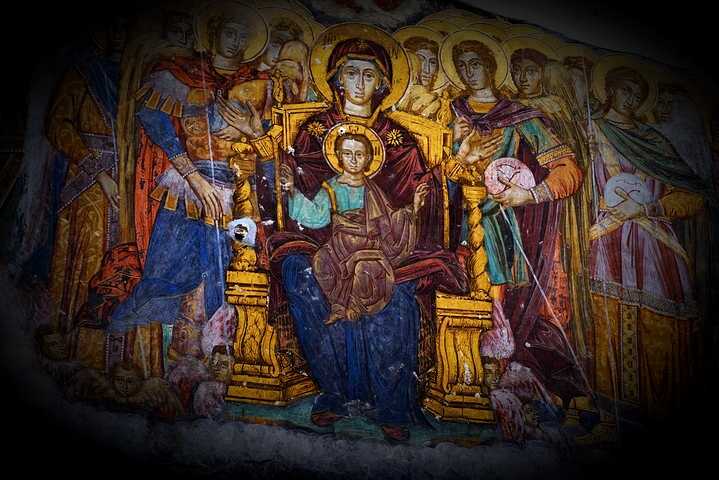
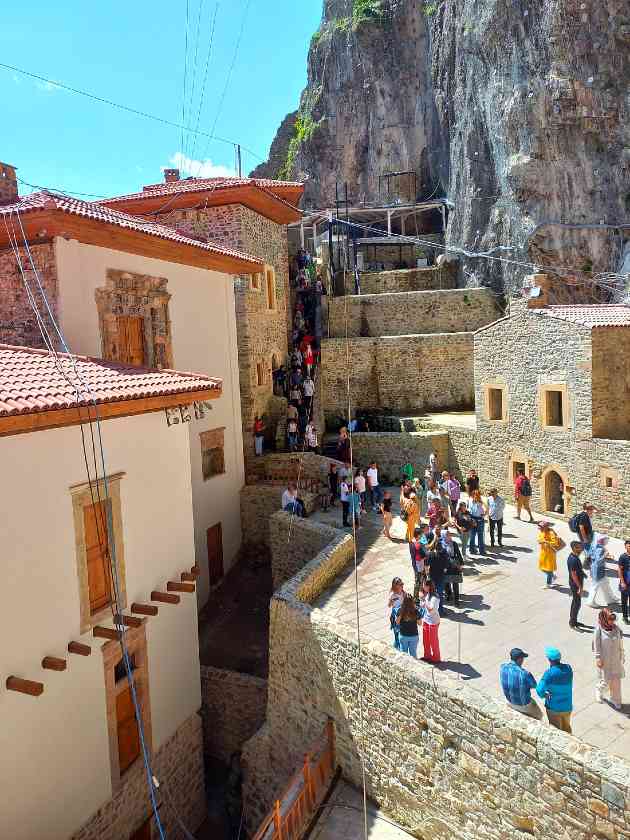
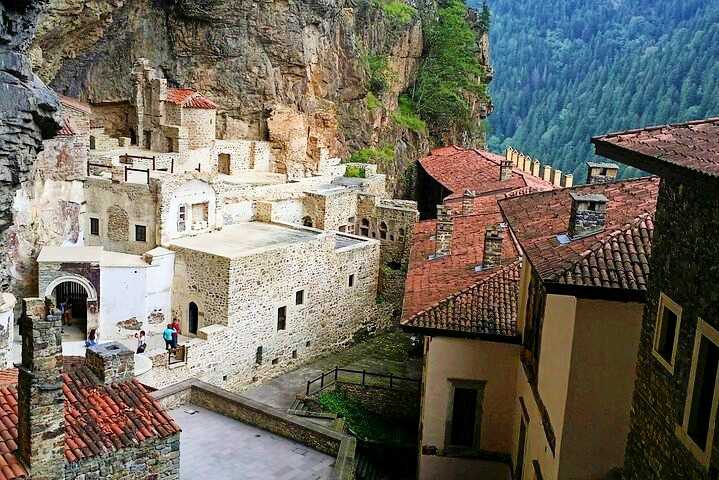
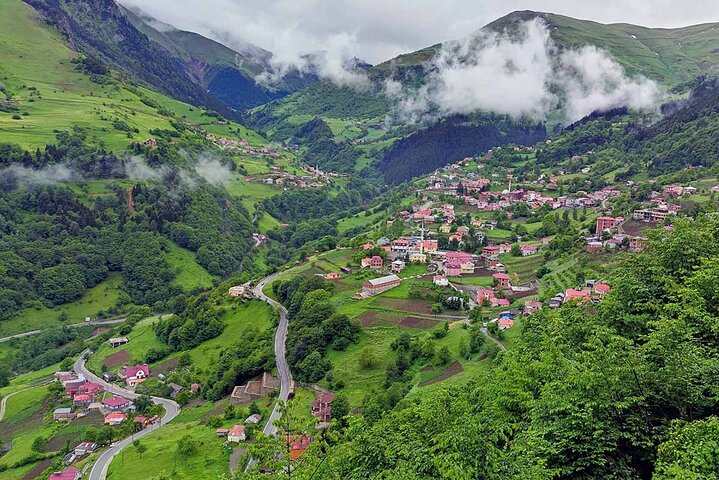
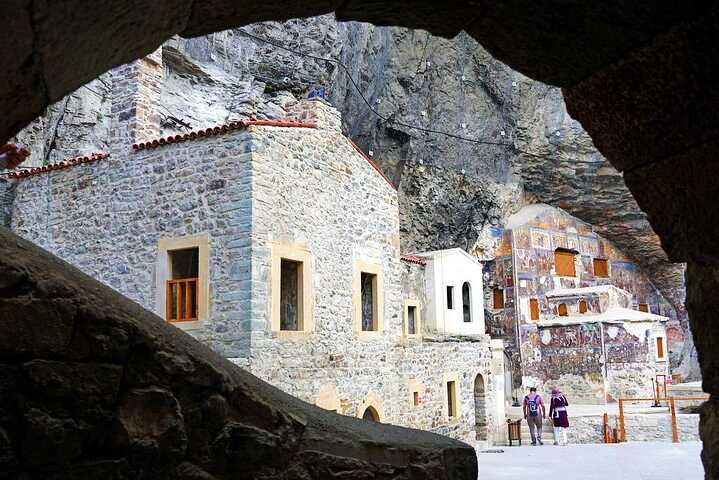
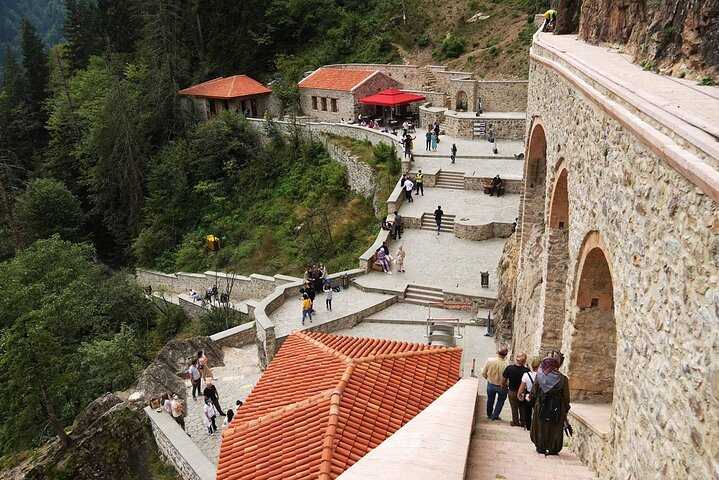
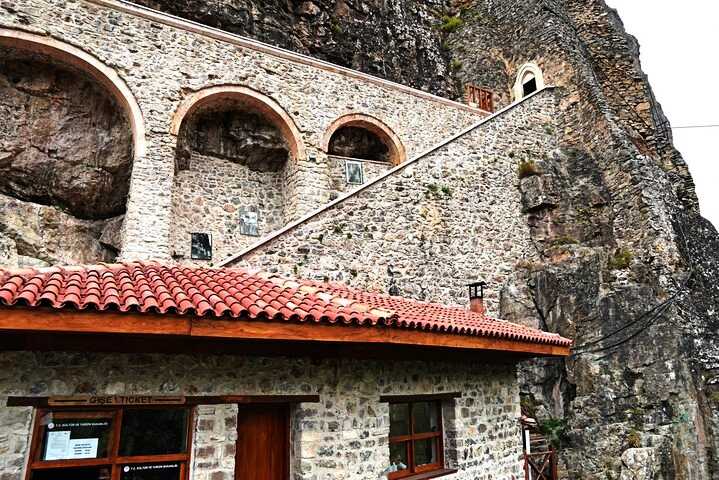
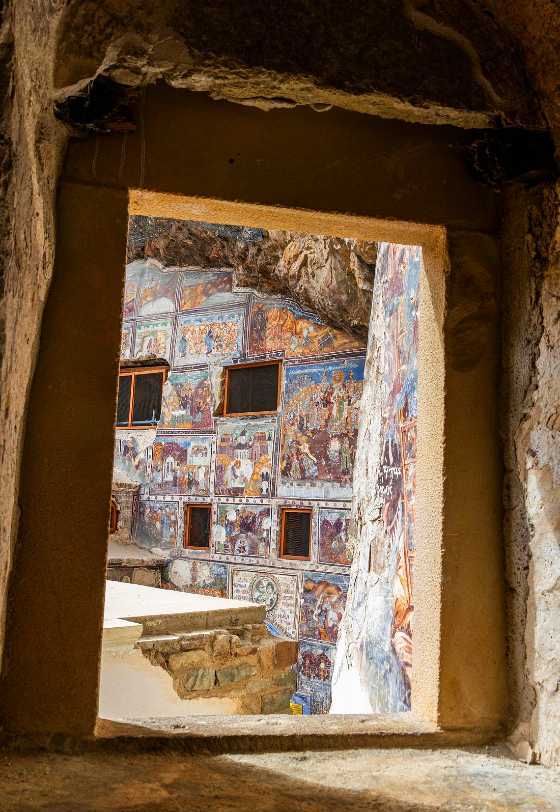
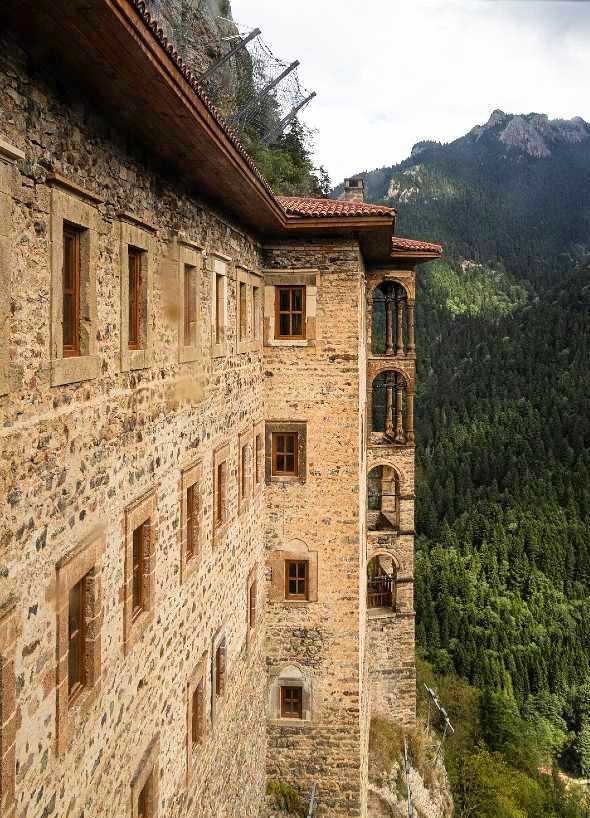
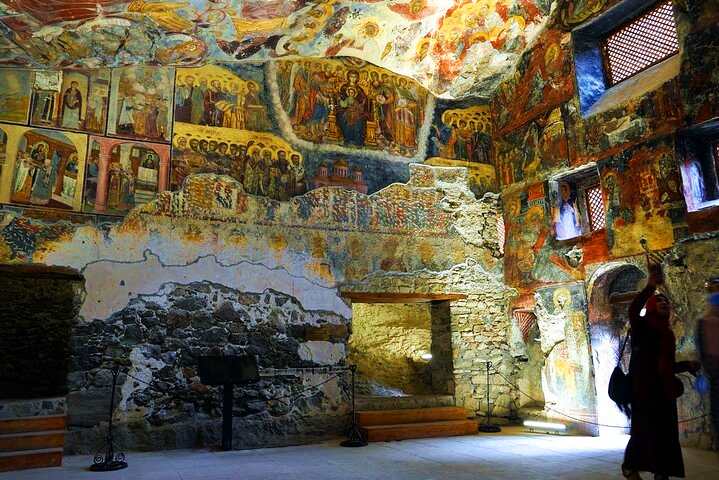
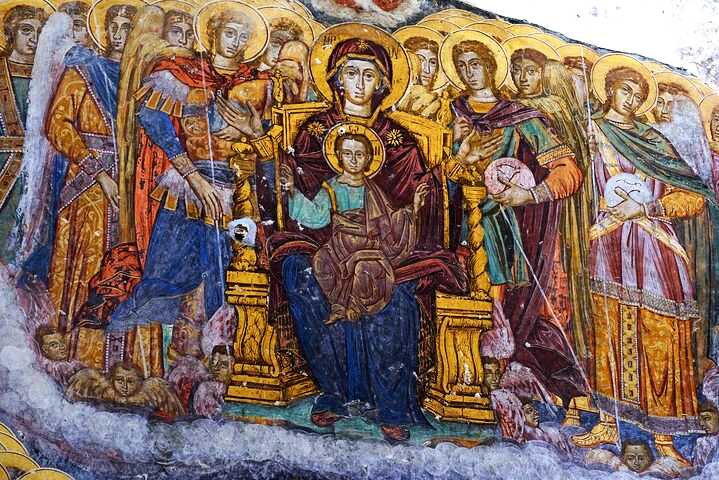
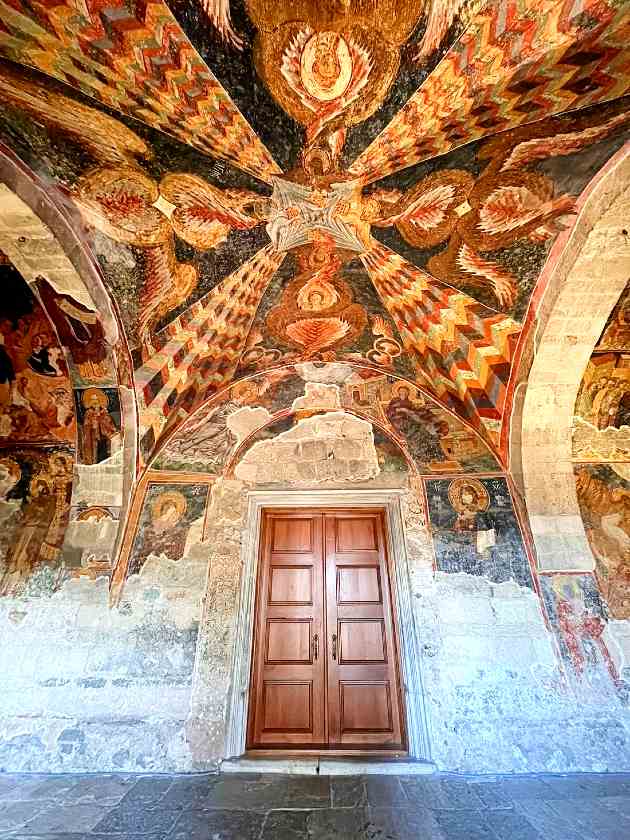
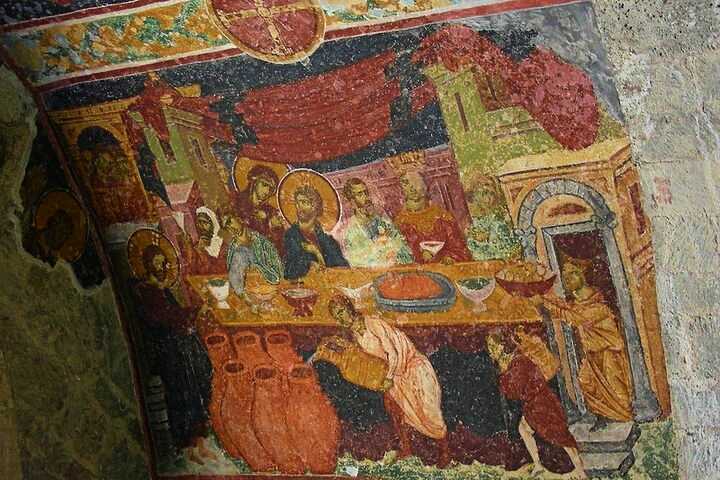
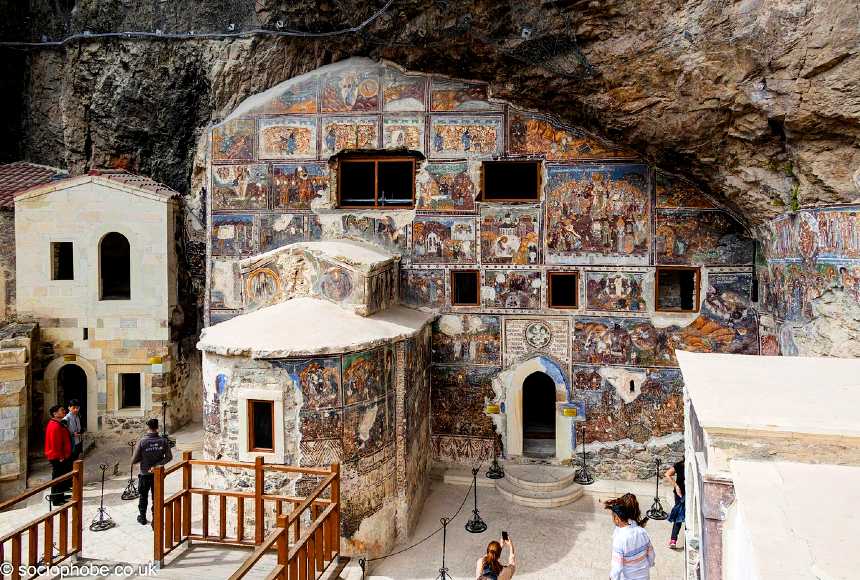

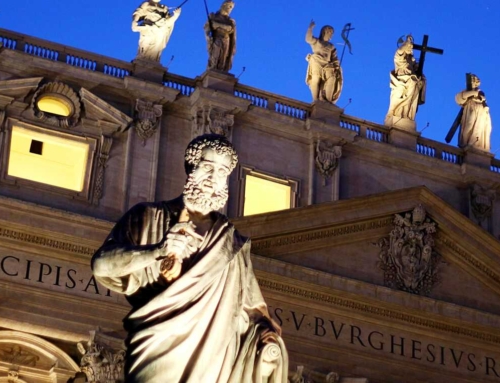
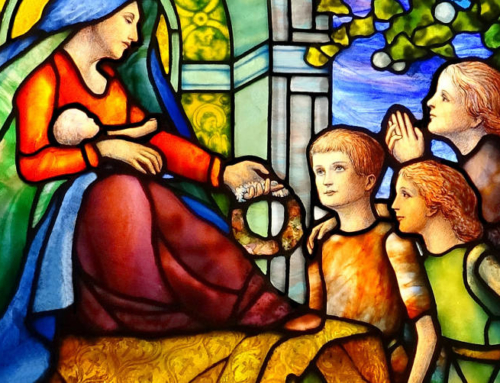
Leave A Comment